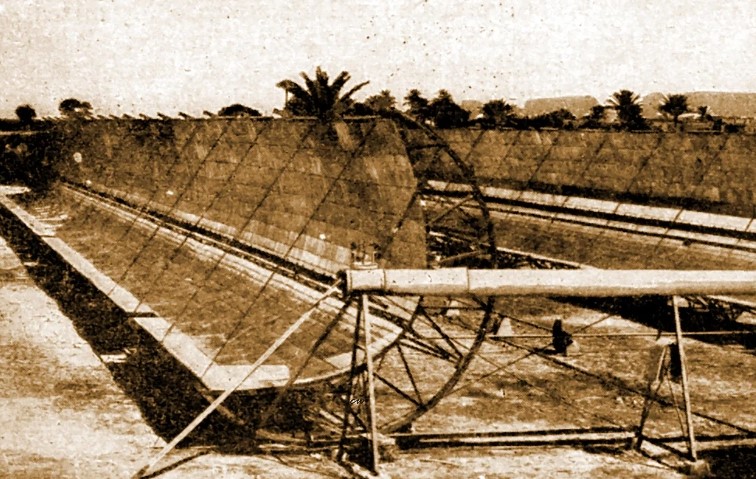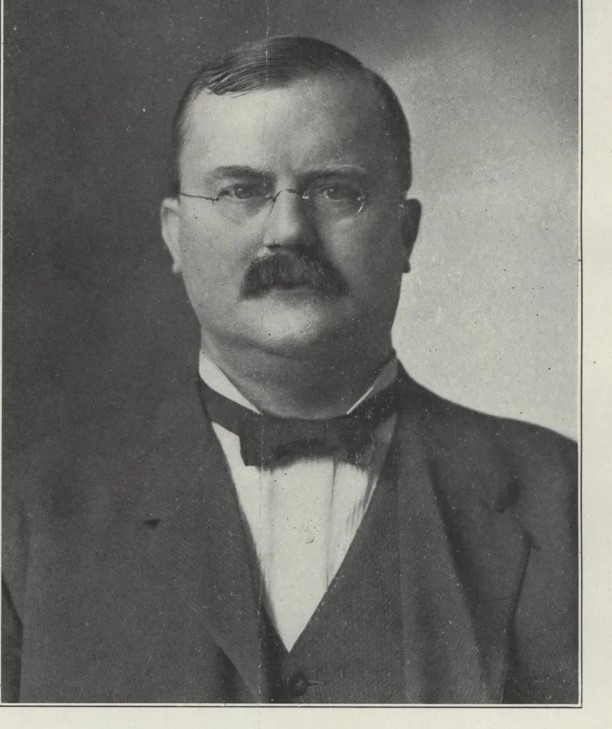 被遗忘的20世纪“太阳引擎”
被遗忘的20世纪“太阳引擎”
The forgotten 20th Century ''Sun engine''
译文简介
被遗忘的20世纪“太阳引擎”
正文翻译
The world's first solar power station was built before World War One, created by a man with a vision for cleaner air.
世界上第一座太阳能发电站建于一战之前,由一个追求清洁空气愿景的人创建。
世界上第一座太阳能发电站建于一战之前,由一个追求清洁空气愿景的人创建。
the early 1900s was an age of coal and iron. Industry was noisy and filthy, spewing the smoke from burning coal far and wide.
20世纪早期是煤炭和钢铁时代。工业很吵很脏,用燃烧煤炭排放的烟雾遍布各地。
20世纪早期是煤炭和钢铁时代。工业很吵很脏,用燃烧煤炭排放的烟雾遍布各地。
In Philadelphia, one of the hives of industry on the Eastern Seaboard of the US, things had already become intolerable. In 1904, some 50 years before the country's Air Pollution Act of 1955, the city's administrators had created their own regulation for cleaner air. It limited the amount of smoke in flues, chimneys and open spaces, and punished those who emitted fumes of a "certain degree of darkness" with fines.
在美国东海岸的重工业中心之一——费城,情况已经变得难以忍受。在1955年国家制定空气污染法令之前的1904年,该市政府制定了自己的清洁空气规定。它限制了烟道、烟囱和开放空间中烟雾的数量,并惩罚那些排放出"一定程度的黑暗"烟雾的人罚款。
在美国东海岸的重工业中心之一——费城,情况已经变得难以忍受。在1955年国家制定空气污染法令之前的1904年,该市政府制定了自己的清洁空气规定。它限制了烟道、烟囱和开放空间中烟雾的数量,并惩罚那些排放出"一定程度的黑暗"烟雾的人罚款。
Into this world came an American inventor with a simple plan – to harness the heat of the Sun so it could be used to power machinery. It has taken more than a century for ideas like his to achieve critical mass, but we could be at a turning point; earlier in April, the energy analysts Ember published a report predicting that energy production from fossil fuels will peak this year.
在这个世界里,出现了一位美国发明家,他有一个简单的计划——利用太阳的热量来驱动机器。像他这样的想法花费了一个多世纪的时间才达到关键质量,但我们可能正处于一个转折点。今年早些时候,能源分析机构Ember发布了一份报告,预测化石燃料的能源生产将在今年达到峰值。
原创翻译:龙腾网 http://www.ltaaa.cn 转载请注明出处
在这个世界里,出现了一位美国发明家,他有一个简单的计划——利用太阳的热量来驱动机器。像他这样的想法花费了一个多世纪的时间才达到关键质量,但我们可能正处于一个转折点。今年早些时候,能源分析机构Ember发布了一份报告,预测化石燃料的能源生产将在今年达到峰值。
原创翻译:龙腾网 http://www.ltaaa.cn 转载请注明出处
The technology that will help push this tipping point might have come of age in the 1980s, but the story of Frank Shuman's quest to harness the power of the Sun shows that the seeds were sown a lot earlier.
推动这个转折点的技术可能已经在20世纪80年代成熟,但弗兰克·舒曼追求利用太阳的力量的故事表明,这些种子早在很久以前就已经播下了。
推动这个转折点的技术可能已经在20世纪80年代成熟,但弗兰克·舒曼追求利用太阳的力量的故事表明,这些种子早在很久以前就已经播下了。
In the 1890s, Shuman invented a method of strengthening glass with internal wires. The glass was more fire-resistant and also held together when it cracked, making it less likely to create dangerously sharp shards. Institutions such as schools and prisons loved it. Shuman, who had started his career in Virginia, then went to work for his uncle's metalwork factory in Philadelphia – the factory was casting a statue of Pennsylvania's founder William Penn, and needed to find a way to electroplate it with aluminium to protect it from the pollution-clogged air high above City Hall. At the same time, he started a company selling his patented "Safe-tee Glass".
在19世纪90年代,舒曼发明了一种通过内部金属丝加强玻璃的方法。这种玻璃更加耐火,也能够在破裂时保持结构完整,减少危险的锋利碎片的产生。学校和监狱等机构对这种玻璃爱不释手。舒曼最初在弗吉尼亚州开始自己的职业生涯,之后去了他叔叔的金属工厂在费城工作,这个工厂正在铸造宾夕法尼亚州创始人威廉·彭恩的雕像,需要找到一种用铝电镀保护它免受市政厅上空污染严重的空气影响的方法。同时,他成立了一家销售他专利的"安全玻璃"的公司。
原创翻译:龙腾网 http://www.ltaaa.cn 转载请注明出处
在19世纪90年代,舒曼发明了一种通过内部金属丝加强玻璃的方法。这种玻璃更加耐火,也能够在破裂时保持结构完整,减少危险的锋利碎片的产生。学校和监狱等机构对这种玻璃爱不释手。舒曼最初在弗吉尼亚州开始自己的职业生涯,之后去了他叔叔的金属工厂在费城工作,这个工厂正在铸造宾夕法尼亚州创始人威廉·彭恩的雕像,需要找到一种用铝电镀保护它免受市政厅上空污染严重的空气影响的方法。同时,他成立了一家销售他专利的"安全玻璃"的公司。
原创翻译:龙腾网 http://www.ltaaa.cn 转载请注明出处

Shuman's invention was tested in Egypt in 1913, showing how water could be pumped from the Nile without burning fossil fuels (Credit: Alamy)
舒曼的发明于1913年在埃及进行了测试,展示了如何在不燃烧化石燃料的情况下从尼罗河抽水(图片来源:Alamy)。
As writer Christopher R Dougherty notes in a profile on Shuman for the Philadelphia website Hidden City: "The electroplating and wire glass processes were so innovative that Scientific American magazine published articles on each within two weeks of each other in 1892; they were also successful enough that Shuman left employment to focus full-time on his inventions."
正如作家克里斯托弗·R·多赫蒂在费城网站Hidden City对舒曼的介绍中所说:"电镀和金属丝玻璃工艺都非常创新,以至于《科学美国人》杂志在1892年的两周内都发表了相关文章。他们非常成功,以至于舒曼离开了工作,专心致力于自己的发明。
正如作家克里斯托弗·R·多赫蒂在费城网站Hidden City对舒曼的介绍中所说:"电镀和金属丝玻璃工艺都非常创新,以至于《科学美国人》杂志在1892年的两周内都发表了相关文章。他们非常成功,以至于舒曼离开了工作,专心致力于自己的发明。
An inveterate inventor, Shuman had long been intrigued by the concept of using natural forces to create electricity. "Shuman was well aware of the ever-present nuisance of coal smoke," Dougherty tells the BBC. "In promotional literature for his direct-acting solar engine, he claimed a byproduct of his technology would [mean] 'the air of the cities will be healthy and pure'.
作为一个不断探索的发明家,舒曼长期以来一直着迷于利用自然力量创造电力的概念。"舒曼非常清楚煤烟的永久存在所带来的麻烦,"多赫蒂告诉BBC。"在他的直控太阳能发动机的宣传资料中,他声称他的技术的一个副产品将会使'城市的空气变得健康和纯洁'。
原创翻译:龙腾网 http://www.ltaaa.cn 转载请注明出处
作为一个不断探索的发明家,舒曼长期以来一直着迷于利用自然力量创造电力的概念。"舒曼非常清楚煤烟的永久存在所带来的麻烦,"多赫蒂告诉BBC。"在他的直控太阳能发动机的宣传资料中,他声称他的技术的一个副产品将会使'城市的空气变得健康和纯洁'。
原创翻译:龙腾网 http://www.ltaaa.cn 转载请注明出处
"Our riverfronts were full of coal yards and oil refineries and cheap fossil fuels, so for Shuman to imagine the end of this resource was far ahead of its time."
"我们的河岸充斥着煤港和炼油厂以及廉价的化石燃料,所以舒曼能够想象到这一资源的终结已经远远超前于他所处的时代。"
"我们的河岸充斥着煤港和炼油厂以及廉价的化石燃料,所以舒曼能够想象到这一资源的终结已经远远超前于他所处的时代。"
Free to tinker thanks to his safety-glass fortune, in 1906 Shuman began working from a compound he had built at his home in the north-eastern suburb of Tacony, Philadelphia, to create an engine powered by the Sun's rays. Reflectors were placed around insulated boxes, which were built on swivels so the reflectors could follow the Sun's path during the day. The Sun's rays were directed toward a vessel of water held in a vacuum to lower its boiling point, which was connected to a low-pressure steam engine. By 1910, Shuman had refined the concept to the point where he could run a small toy train on vaporised ether and was extolling the benefits of this clean form of power to all who would listen.
感谢他安全玻璃带来的财富,舒曼在1906年开始在其位于费城东北郊区Taocny的住所建造的一个实验室里自由发挥创造力,试图创造一种太阳能驱动的发动机。反射器被放置在绝缘盒子周围,盒子与晃动支架相连,以便反射器可以在白天跟随太阳的路径移动。太阳的光线被引导到一个储存于真空中的水容器中,以降低其沸点,并与低压蒸汽发动机相连接。到1910年,舒曼已经将这个概念推向了更高的水平,可以用蒸发的醚驱动一个小型玩具火车,并向所有愿意听取的人推销这种清洁能源的优点。
感谢他安全玻璃带来的财富,舒曼在1906年开始在其位于费城东北郊区Taocny的住所建造的一个实验室里自由发挥创造力,试图创造一种太阳能驱动的发动机。反射器被放置在绝缘盒子周围,盒子与晃动支架相连,以便反射器可以在白天跟随太阳的路径移动。太阳的光线被引导到一个储存于真空中的水容器中,以降低其沸点,并与低压蒸汽发动机相连接。到1910年,舒曼已经将这个概念推向了更高的水平,可以用蒸发的醚驱动一个小型玩具火车,并向所有愿意听取的人推销这种清洁能源的优点。
In 1913, Shuman travelled to Egypt to demonstrate his technology
1913年,舒曼前往埃及展示他的技术。
1913年,舒曼前往埃及展示他的技术。
While Shuman was working on his "Sun engine" another US inventor – Aubrey Eneas – created a giant metallic solar engine, which was lined with nearly 1,800 mirrors and measured 33ft (10m) across, for an ostrich farm in California in 1906. The device did work, running a pump to irrigate the land, but was ultimately too expensive and cumbersome to prove viable.
舒曼在研究“太阳引擎”的同时,美国另一位发明家奥布里·伊尼亚斯在1906年为加利福尼亚的一家鸵鸟养殖场创造了一台巨大的金属太阳引擎,它内衬有近1800个镜子,直径为33英尺(10米)。这个装置确实可以运作,用于驱动灌溉土地的泵,但终归成本过高且不太方便,无法证明其可行性。
舒曼在研究“太阳引擎”的同时,美国另一位发明家奥布里·伊尼亚斯在1906年为加利福尼亚的一家鸵鸟养殖场创造了一台巨大的金属太阳引擎,它内衬有近1800个镜子,直径为33英尺(10米)。这个装置确实可以运作,用于驱动灌溉土地的泵,但终归成本过高且不太方便,无法证明其可行性。
News of Suman's projects travelled, eventually, to Egypt, which was then under military occupation by the British Empire. Egypt had vast cotton fields but irrigating them by hand was a laborious process, and using coal-powered engines was not cost-effective. "Shuman courted British capitalists to invest in his solar array as way to cut coal costs," says Dougherty.
舒曼的项目消息最终传到了当时处于英国军事占领下的埃及。埃及有大片的棉田,但手工灌溉的过程很费力,使用煤炭动力引擎也不划算。“舒曼请求英国资本家投资他的太阳能系统,以削减煤炭成本,”多尔蒂说。
舒曼的项目消息最终传到了当时处于英国军事占领下的埃及。埃及有大片的棉田,但手工灌溉的过程很费力,使用煤炭动力引擎也不划算。“舒曼请求英国资本家投资他的太阳能系统,以削减煤炭成本,”多尔蒂说。
In 1913, Shuman travelled to Egypt to demonstrate his technology. "Sipping champagne and snacking on cheese and caviar, moustachioed men in Panama hats and pith helmets and elegant ladies carrying parasols strolled the grounds, marvelling at the long, gleaming rows of trough-shaped mirrors concentrating sunlight onto cast-iron boilers running the length of each trough," recounted Jeremy Shere, writing about the event in his book Renewable: The World-Changing Power of Alternative Energy. "Heated to just more than 200F (93C), water in the boilers turned to low-pressure steam to drive a specially designed, 75 horsepower engine. As if by magic, running on nothing more than sunlight, the engine pumped thousands of gallons of water from the Nile, saturating the arid landscape."
1913年,舒曼前往埃及展示他的技术。“喝着香槟,吃着奶酪和鱼子酱,戴着巴拿马帽和草帽的大胡子男士以及拿着阳伞的优雅女士在花园里漫步,惊奇地看着排列整齐的槽形镜子将阳光聚集在每个槽的铸铁锅炉上。”杰里米·谢尔在他的书《可再生能源:改变世界的替代能源》中回顾了这个事件,“锅炉中的水加热到略高于200℉(93℃),变成低压蒸汽,驱动特别设计的75马力发动机。仿佛是魔术,仅仅靠阳光,引擎就可以从尼罗河抽取成千上万加仑的水,滋润这片干旱的土地。”
1913年,舒曼前往埃及展示他的技术。“喝着香槟,吃着奶酪和鱼子酱,戴着巴拿马帽和草帽的大胡子男士以及拿着阳伞的优雅女士在花园里漫步,惊奇地看着排列整齐的槽形镜子将阳光聚集在每个槽的铸铁锅炉上。”杰里米·谢尔在他的书《可再生能源:改变世界的替代能源》中回顾了这个事件,“锅炉中的水加热到略高于200℉(93℃),变成低压蒸汽,驱动特别设计的75马力发动机。仿佛是魔术,仅仅靠阳光,引擎就可以从尼罗河抽取成千上万加仑的水,滋润这片干旱的土地。”

Shuman's device drew water from the Nile to irrigate Egypt's vitally important and water-hungry cotton fields (Credit: Getty Images)
舒曼的装置从尼罗河引水灌溉埃及极为重要且缺水的棉田(图片来源:Getty Images)。
Among the crowd was Lord Kitchener, the British military leader who brought Sudan under the control of the British Empire in the 1890s. According to Dougherty, Kitchener "saw it as integral to his programme of infrastructural improvement of Egypt. Kitchener offered Shuman a 30,000-acre (121sq km) cotton plantation in Sudan to replicate the engine."
观众中还有基奇纳勋爵,他在19世纪90年代将苏丹纳入英国帝国的控制之下。根据多尔蒂的说法,基奇纳“视其为提高埃及基础设施的计划不可或缺。基奇纳向舒曼提供了位于苏丹的一个3万英亩(121平方千米)的棉花种植园,以复制这台引擎。”
观众中还有基奇纳勋爵,他在19世纪90年代将苏丹纳入英国帝国的控制之下。根据多尔蒂的说法,基奇纳“视其为提高埃及基础设施的计划不可或缺。基奇纳向舒曼提供了位于苏丹的一个3万英亩(121平方千米)的棉花种植园,以复制这台引擎。”
Shuman's invention was soon dealt a double blow, however – the arrival of World War One, and the discovery of cheap oil in the Middle East and elsewhere. Shuman's design may not have been refined enough for mainstream use, says Dougherty. "The engine did not find wider appeal but the system was technically somewhat complex and this probably frustrated adoption."
然而,舒曼的发明很快受到双重打击——一战的到来和中东及其他地区廉价石油的发现。道格蒂认为,舒曼的设计可能还不够成熟,无法得到主流的应用。“发动机并没有得到更广泛的吸引力,但系统在技术上有些复杂,这可能阻碍了它的采用。”
然而,舒曼的发明很快受到双重打击——一战的到来和中东及其他地区廉价石油的发现。道格蒂认为,舒曼的设计可能还不够成熟,无法得到主流的应用。“发动机并没有得到更广泛的吸引力,但系统在技术上有些复杂,这可能阻碍了它的采用。”
Despite this, Shuman had a far-sighted appreciation of how such "solar engines" could replace dirty fuel when built in great numbers. As early as 1911, writing in Scientific American, he predicted the kind of vast solar farms we see today:
尽管如此,舒曼对“太阳能发动机”能够在大量建造时替代脏燃料有着长远的认识。早在1911年,他在《科学美国人》杂志上就预测了今天我们看到的大规模太阳能农场:
尽管如此,舒曼对“太阳能发动机”能够在大量建造时替代脏燃料有着长远的认识。早在1911年,他在《科学美国人》杂志上就预测了今天我们看到的大规模太阳能农场:
"A Sun-power plant, in order to be practicable, must possess, first, high efficiency; low cost of installation and maintenance; well-marked length of service; and should not require specially trained mechanics for its operation… It is entirely practicable to produce a sun-power plant in this manner up to 10,000 horse-power and over. An ideal plant must be subject to little accident; hence, it must lie near the ground in order not to be affected by storms and winds. Each unit must be repairable without stopping the operation; construction must be simple and easily understood by the ordinary steam engineer; and wear and tear must be reduced to a minimum."
“太阳能电厂首先必须具备高效、安装和维护成本低、使用寿命长和不需要特别训练的技术人员进行运营的特点……完全可以按照这种方式生产出高达10,000马力以上的太阳能电厂。理想的电厂必须不易发生故障,因此,必须靠近地面,以免受风暴和风影响。每个单元都必须能够在不停机的情况下进行维修;其结构必须简单且普通的蒸汽工程师能够轻易了解。磨损必须尽量减少。”
原创翻译:龙腾网 http://www.ltaaa.cn 转载请注明出处
“太阳能电厂首先必须具备高效、安装和维护成本低、使用寿命长和不需要特别训练的技术人员进行运营的特点……完全可以按照这种方式生产出高达10,000马力以上的太阳能电厂。理想的电厂必须不易发生故障,因此,必须靠近地面,以免受风暴和风影响。每个单元都必须能够在不停机的情况下进行维修;其结构必须简单且普通的蒸汽工程师能够轻易了解。磨损必须尽量减少。”
原创翻译:龙腾网 http://www.ltaaa.cn 转载请注明出处
Shuman died in 1919, and it would take another 50 years for his ideas to percolate once again, after the shock of the Oil Crisis of 1973 brought the era of cheap oil to an end. Little more than a decade later, the first full-scale solar energy plant, the Solar Energy Generating Systems (Segs) facility was unveiled in California's Mojave Desert. Segs would eventually contain more than 936,000 mirrors (or "collectors") reflecting sunlight at 70 to 80 times its natural intensity to boil synthetic oil, which then drove an electricity-creating turbine. Though much of the original Segs has been replaced by photo-voltaic panels, the facility, at its peak, was capable of generating enough power for more than 230,000 homes.
舒曼于1919年去世,他的思想再次震荡后,还需要50年时间才能得到扩散。1973年的石油危机给廉价石油的时代画上了句号,仅十几年后,加利福尼亚州莫哈韦沙漠揭幕了第一个全尺寸太阳能发电站——太阳能发电系统(Segs)设施。 该设施最终包含了936,000多个反射光线的镜子(或“收集器”),将阳光反射到70到80倍的自然强度,以将合成油烧开,驱动发电涡轮机。尽管Segs的大部分原始部分已被光伏电池板所取而代之,但在巅峰时期,该设施能够为超过230,000户家庭产生足够的电力。
舒曼于1919年去世,他的思想再次震荡后,还需要50年时间才能得到扩散。1973年的石油危机给廉价石油的时代画上了句号,仅十几年后,加利福尼亚州莫哈韦沙漠揭幕了第一个全尺寸太阳能发电站——太阳能发电系统(Segs)设施。 该设施最终包含了936,000多个反射光线的镜子(或“收集器”),将阳光反射到70到80倍的自然强度,以将合成油烧开,驱动发电涡轮机。尽管Segs的大部分原始部分已被光伏电池板所取而代之,但在巅峰时期,该设施能够为超过230,000户家庭产生足够的电力。

Shuman wrote in 1914 that humanity would descend into "barbairsm" unless they harnessed solar power (Credit: Public domain)
舒曼在1914年写道,如果不利用太阳能,人类将陷入 "荒芜 "状态
In 2013, two Swiss artists – Christina Hemauer and Roman Keller – recreated part of Shuman's far-reaching design as part of an art installation in Egypt. Along with parts of the 1913 solar engine was this quote from Shuman, written in 1914: "One thing I feel sure of, and that is that the human race must finally utilise direct Sun power or revert to barbarism."
2013年,两位瑞士艺术家——克里斯蒂娜·海毛尔和罗曼·凯勒——在埃及的一件艺术装置中重新创造了舒曼宏伟的设计部分。除了1913年的太阳能发动机部分外,还有舒曼在1914年写下的这句话:“我感到非常确定的一件事情是,人类最终必须利用直接的太阳能,否则就会回到野蛮状态。”
2013年,两位瑞士艺术家——克里斯蒂娜·海毛尔和罗曼·凯勒——在埃及的一件艺术装置中重新创造了舒曼宏伟的设计部分。除了1913年的太阳能发动机部分外,还有舒曼在1914年写下的这句话:“我感到非常确定的一件事情是,人类最终必须利用直接的太阳能,否则就会回到野蛮状态。”
More than a century after Shuman's experiments, the world seems to have finally caught up with the promise of clean-burning Sun engines. In fact, Egypt itself has opened what is now the fourth-largest solar plant in the world, some 40km (25 miles) north-west of the Aswan Dam. The Benban Solar Park covers more than 37 sq km (14.4 sq miles) and is so big it can be seen from space – a suitably oversized testament to Shuman's vision of harnessing power across the vast gulf of space.
舒曼实验的一个多世纪后,世界似乎终于实现了洁净燃烧太阳引擎的承诺。事实上,埃及本身已经开发了世界第四大的太阳能发电厂,距离埃斯旺大坝西北方向约40公里(25英里)。Benban太阳能公园覆盖面积超过37平方公里(14.4平方英里),规模如此之大,可以从太空中看到,是对舒曼在穿越广阔的太空中获取能量的愿景的恰当而夸张的证明。(Benban是位于埃及的一个太阳能光伏发电站群,由约37个分离的太阳能电站组成,总共有约5.5万个光伏板。它的总装机容量达到了1.8 GW,足以为约1百万户家庭供电。该发电站群是目前世界上最大的太阳能电站之一。)
舒曼实验的一个多世纪后,世界似乎终于实现了洁净燃烧太阳引擎的承诺。事实上,埃及本身已经开发了世界第四大的太阳能发电厂,距离埃斯旺大坝西北方向约40公里(25英里)。Benban太阳能公园覆盖面积超过37平方公里(14.4平方英里),规模如此之大,可以从太空中看到,是对舒曼在穿越广阔的太空中获取能量的愿景的恰当而夸张的证明。(Benban是位于埃及的一个太阳能光伏发电站群,由约37个分离的太阳能电站组成,总共有约5.5万个光伏板。它的总装机容量达到了1.8 GW,足以为约1百万户家庭供电。该发电站群是目前世界上最大的太阳能电站之一。)
评论翻译
很赞 ( 3 )
收藏